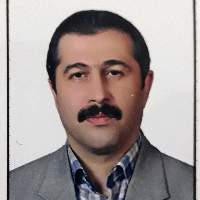Investigation and analysis of physical factors affecting children's mental map of educational environments(Case study: Second grade of primary schools in Rasht)
In each educational system, different factors are placed in interaction to achieve learners' teaching and learning process. Introduction physical characteristics of schools are essential topics in improving the quality of education and learning. Considering these components in design not only to improve the quality of the environment can be helpful, but because of the mental scale of the child, it can affect the mental image of the environment, and it can influence the formation of behavioral concepts such as legibility and attachment to the environment. This study aims to identify and investigate the physical factors affecting children's mental image of educational environments.
Methodology of this study is applied in terms of practical purpose, nature: descriptive-analytical, strategy: survey, research method qualitative and quantitative as mixed. The method of extracting the mental images of children in this study is a "Sketch map" and analysis using the MAXQDA version of version 2020. Also, to rank the exploratory factors, the factor analysis method and SPSS version 22 are used. The study's statistical population is secondary schools in the Rasht city of Rasht, 120 of which were selected from the available sampling.
The results of the first step of the study showed that, through the physical spaces of schools, there is an incredible number in drawing up the physical elements of the school, classes (32 %), yard and field (28 %), and the minimum reference to the school water (8 %).
The physical spaces where students are constantly engaged in school are visible in their mental image of the school. In the second step of the study, four factors, "geometry and space syntax", " open and semi-open spaces "," connecting spaces, "and" signs, "were identified as contributing factors to children's mental images. Among these factors, "geometry and space syntax" had the greatest effect on children's mental images in the studied samples. The effect of "open and semi-open spaces" was evident in children's painting and mental images. "connecting spaces" was another important factor that was sometimes seen in children's mental pictures of their educational environment. Regarding the fourth factor, the "signs" of the school were the most frequent in the painting of children and the shops of schools in most of the paintings. However, the dominant element of children's pictures of the class board and the school steps in schools were only the collection elements of children's painting.
-
Identifying and prioritizing the role of judging components of architectural competitions in the promotion of contemporary Iranian architecture
Seyyed Mohammad Soghrati, Heydar Jahanbakhsh*,
Interdisciplinary studies in architecture and urbanism development, -
A study of the Common Elements of Iranian Instrumental Music and Architecture, a Case Study of the Ali-Qapu Building in Naqshe-Jahan Square
Atefeh Adinefar, Marzieh Kazemzadeh *,
Journal of Islamic Lifestyle Centered on Health,


